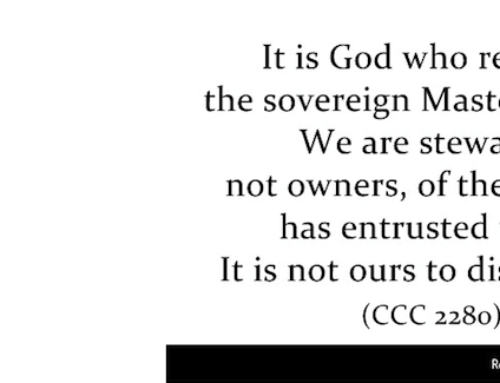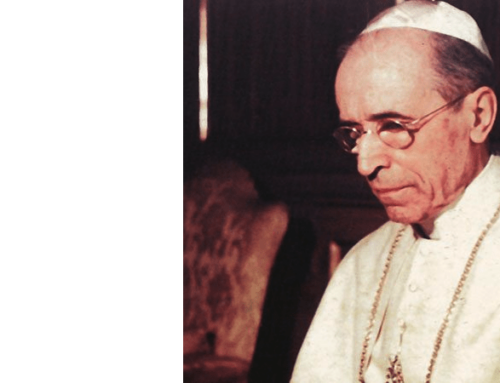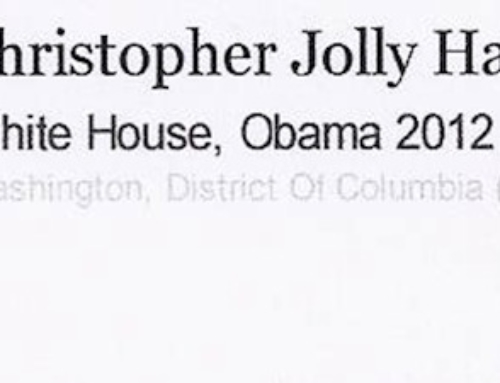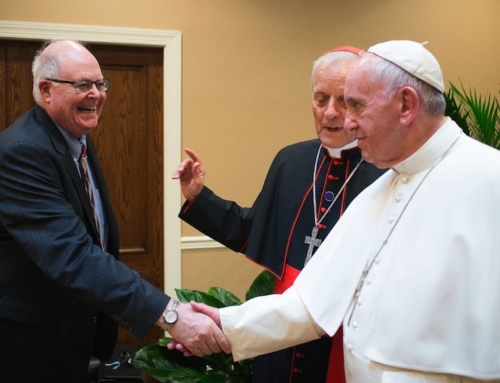by Rick Hinshaw
(Catalyst 1/1998)
It is now 25 years since the Supreme Court declared unborn children to be non-persons, opening the floodgates to a slaughter of innocent human life unprecedented in our nation’s history.
Pro-life people were horrified by Roe vs. Wade. They foresaw the mass destruction of pre-born life which it would unleash; and they also warned, as National Journal senior writer Michael Kelly recently recalled, “that the widespread acceptance of abortion would lead to a profound moral shift in our culture, a great devaluing of human life.”
Senator James Buckley of New York asked on the floor of the U.S. Senate whether America would continue to uphold the “supreme value” of human life, or whether, in the wake of Roe vs. Wade, the sanctity of life would be “downgraded to one of a number of values to be weighed in determining whether a particular life shall be terminated?”
Others, however, dismissed such dire warnings, and until recently Kelly counted himself among those skeptics. “Why,” he reasoned, “should a tolerance for ending human life under one, very limited, set of conditions necessarily lead to an acceptance of ending human life under other, broader terms?”
Now, however, he has awakened to the clear connection between unrestricted abortion and our growing culture of death—a connection which, sadly, many in our own Church still cannot grasp, as they continue to dismiss abortion as “only one issue”. What has finally convinced Kelly that “the pessimists were right”? Let him tell you in his own words (Washington Post, 11/6/97):
“On Sunday, Nov. 2, an article in the New York Times, the closest thing we have to the voice of the intellectual establishment, came out for killing babies.” That’s right, he’s talking about killing babies after birth, as opposed to “terminating a pregnancy” by killing them before birth.
The column Kelly is referring to, by MIT psychology professor Steven Pinker, begins as an examination of the recent rash of killings of newborns by their mothers and, in at least one instance, by the father as well.
While conceding that he is “sensationalizing,” but “only slightly,” Kelly sees Pinker coming dangerously close to justifying, if not endorsing, infanticide. In Pinker’s “modest proposal,” writes Kelly, “mothers who kill their newborn infants should not be judged as harshly as people who take human life in its later stages because newborn infants are not persons in the full sense of the word, and therefore do not enjoy a right to life. Who says that life begins at birth?”
A reading of Pinker’s column justifies Kelly’s alarm, especially when we examine, step by step, the professor’s “logic” in trying to define legal personhood.
He begins by dismissing the “anti-abortionists” who “draw the line at conception.”
“That implies,” he writes, “that we should shed tears every time an invisible conceptus fails to implant in the uterus.” So if no one sheds tears at our death, you see, our life never really existed. By that utilitarian logic, there is no inherent value to human life; and our right to live is wholly dependent on the value which other people place on our existence.
Next, Pinker claims that “those in favor of abortion draw the line at viability.” Not quite.Roe vs. Wade allows states to legalize abortion up to the moment of birth, and no less a force than the President of the United States, by his veto of a ban on partial-birth abortion, has upheld the unrestricted killing of children well past the point of viability.
Yet even this does not go far enough for Professor Pinker, who calls for a re-examination of the presumption that “the line must be drawn at some point before birth.” Instead, he writes, “the moral philosophers say” that “the right to life” must derive “from morally significant traits that we humans happen to possess. One such trait is having a unique sequence of experiences that defines us as individuals and connects us to other people. Other traits include an ability to reflect upon ourselves as a continuous locus of consciousness, to form and savor plans for the future, to dread death and to express the choice not to die. And there’s the rub: our immature neonates don’t possess these traits any more than mice do.”
The logic will be familiar to anyone who has argued the abortion issue: Life has no inherent value. Personhood, and thus one’s very right to exist, are dependent on a range of arbitrary factors—level of consciousness, connectedness to other people, awareness of life and death—that will be defined and determined by other human beings. Indeed, Pinker’s criteria for achieving personhood are very similar to those set forth by Mary Ann Warren in her 1973 essay “On the Moral and Legal Status of Abortion”: “consciousness,” of “internal” as well as “external” existence; “reasoning”; “self-motivated activity”; “the capacity to communicate”; and “self-awareness.”
Even Pinker’s use of semantics—labeling a newborn child a “neonate” rather than a “baby”—is of a piece with the pro-abortion strategy of dehumanizing the unborn child through the use of terms like “conceptus” or “fetus.”
Of course, Pinker, while not disputing this logic, distances himself from it somewhat by attributing it to unnamed “moral philosophers.” And indeed, what is perhaps most sobering about his column is that the ideas he expresses are not new, nor are they unique to him. They have long been standard fare among some in the intellectual and medical elite, who have advocated infanticide as a logical corollary to legalized abortion.
Dr. Joseph Fletcher, for instance, in his 1979 book, Humanhood: Essays in Biomedical Ethics, stated unequivocally that “both abortion and infanticide can be justified if and when the good to be gained outweighs the evil—that neither abortion nor infanticide is as such immoral.”
When would the “good” to be gained by killing a newborn infant “outweigh the evil” of such an act? Well, when the baby had been so uncooperative as not to die during an attempted abortion, for one thing. Such babies should be given neonatal care only if the parents wish them to survive, said Dr. Mary Ellen Avery, chief of Boston Children’s Hospital, back in 1975. “There must be a right to dispose of an infant survivor of abortion,” agreed abortionist Dr. Warren Hern (Denver Post, 2/2/77), who has since authored the leading textbook on late term abortion procedures.
Destroying children born with disabilities would be another “good” derived from infanticide. James Watson, Nobel laureate for DNA discovery, declared in 1973 that he would not “declare (a child) alive until three days after birth,” in order to allow for the killing of newborn children with birth defects. His co-discoverer of DNA, Sir Francis Crick, concurred, stating that newborns should have to pass certain genetic tests before being granted the right to live. Geneticist Colin Austin said that personhood should not be declared until some time after birth, to allow for killing the deformed. John Lachs, Ph.D., Vanderbilt University, wrote in the New England Journal of Medicine that some defective infants are “beings that are only human-looking shapes,” and should be put to death like animals.
University of California attorney F. Raymond Marks, speaking at the 1976 Sonoma Conference on Ethical Issues in Neonatal Intensive Care, asserted that the state’s interest in maintaining the lives of defective newborns was offset by the high cost of keeping them alive. “We would prefer a system that broadly defined a class of infants declared as non-persons who could be disposed of by their parents,” he declared.
This brings us back to Pinker’s central theme, which is the key link between legalized abortion and legalized infanticide: de-humanizing those whom we wish to kill, in order to deny them legal personhood.
In the Aug. 11, 1969 issue of the Journal of the American Medical Association, Dr. Robert Williams of Washington State Medical School said that he would not consider infants to be persons until near the end of their first year outside the womb, and that until that point he would justify infanticide. Nuclear physicist Winston Duke compared killing an infant to killing a chimpanzee.
In 1979 Michael Tooley, author of “A Defense of Abortion and Infanticide,” flatly declared, “Since I do not believe human infants are persons, but only potential persons, and since I think that the destruction of potential persons is a morally neutral action, the correct conclusion seems to me to be that infanticide is in itself morally acceptable.”
Mary Ann Warren reached the same conclusion, writing that “killing a newborn infant isn’t murder.” And, despite her extensive list of attributes necessary for personhood, she ultimately decides that the right to kill a newborn infant depends, like abortion, solely on one factor: whether or not the child is “wanted.” “When an unwanted or defective infant is born into a society which cannot afford and/or is not willing to care for it,” she writes, “then its destruction is permissible.”
Nor have such ideas been consigned solely to the realm of idle theorizing. Even before Roe vs. Wade there were reports of handicapped newborns being left to die without medical treatment.
“In 1973 I expressed the concern that abortion of somewhere between a million and two million unborn babies a year would lead to such cheapening of human life that infanticide would not be far behind,” Dr. C. Everett Koop, later U.S. Surgeon General, said in a 1977 speech to the American Academy of Pediatrics entitled “The Slide to Auschwitz.” “Well, you all know that infanticide is being practiced right now in this country…I am concerned that there is no outcry…I am concerned about this because when the first 273,000 German aged, infirm, and retarded were killed in gas chambers there was no outcry from that medical profession either, and it was not far from there to Auschwitz.”
Incredibly, Professor Pinker warns in his column that we must establish “a clear boundary” for conferring personhood, lest “we approach a slippery slope that ends in the disposal of inconvenient people or in grotesque deliberations on the value of individual lives.” He somehow fails to realize that we have long since begun our descent down that slippery slope, and that his column is itself one of those “grotesque deliberations.”
Twenty-five years and more than 30 million deaths later, Michael Kelly is right to be alarmed. Roe vs. Wade has brought us to where we stand now. Either we restore protection to the unborn, or ultimately no human life will be safe.
(A shorter version of this article previously appeared in The Long Island Catholic)






